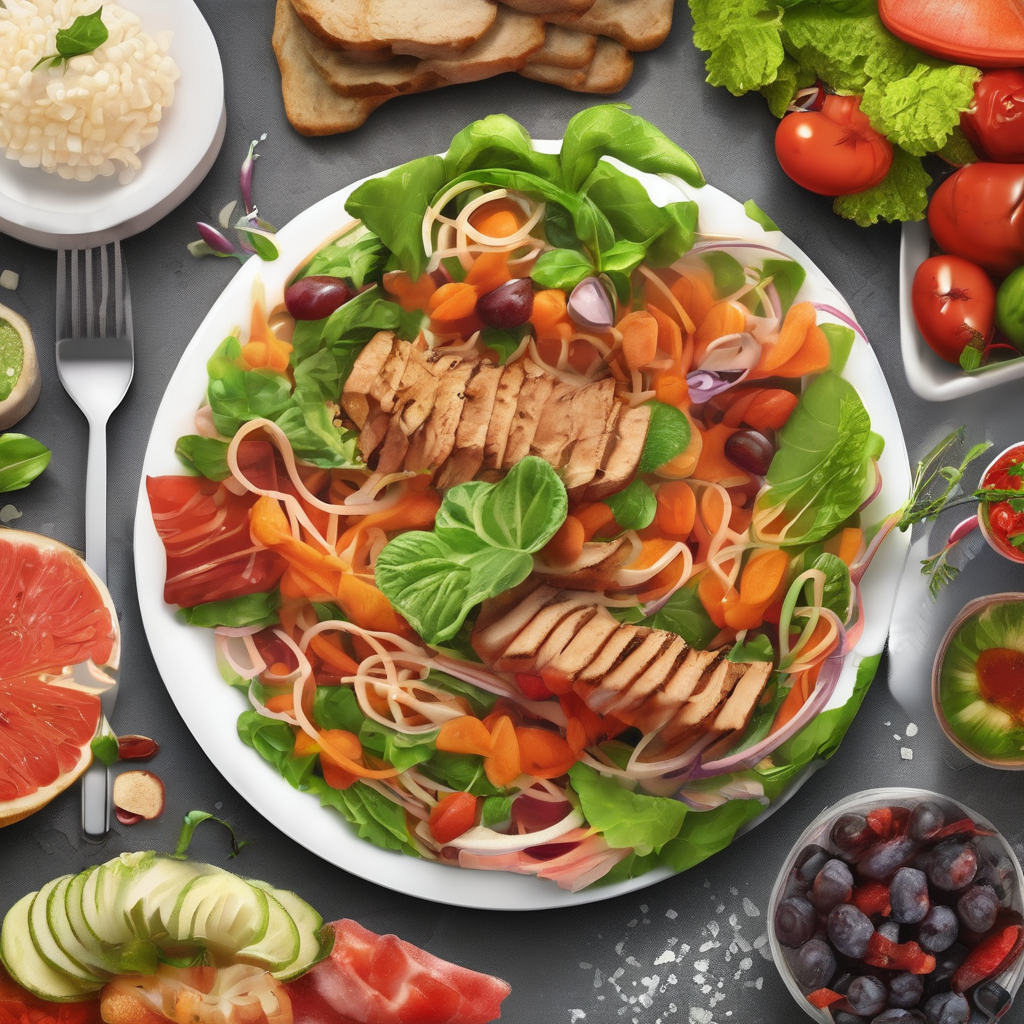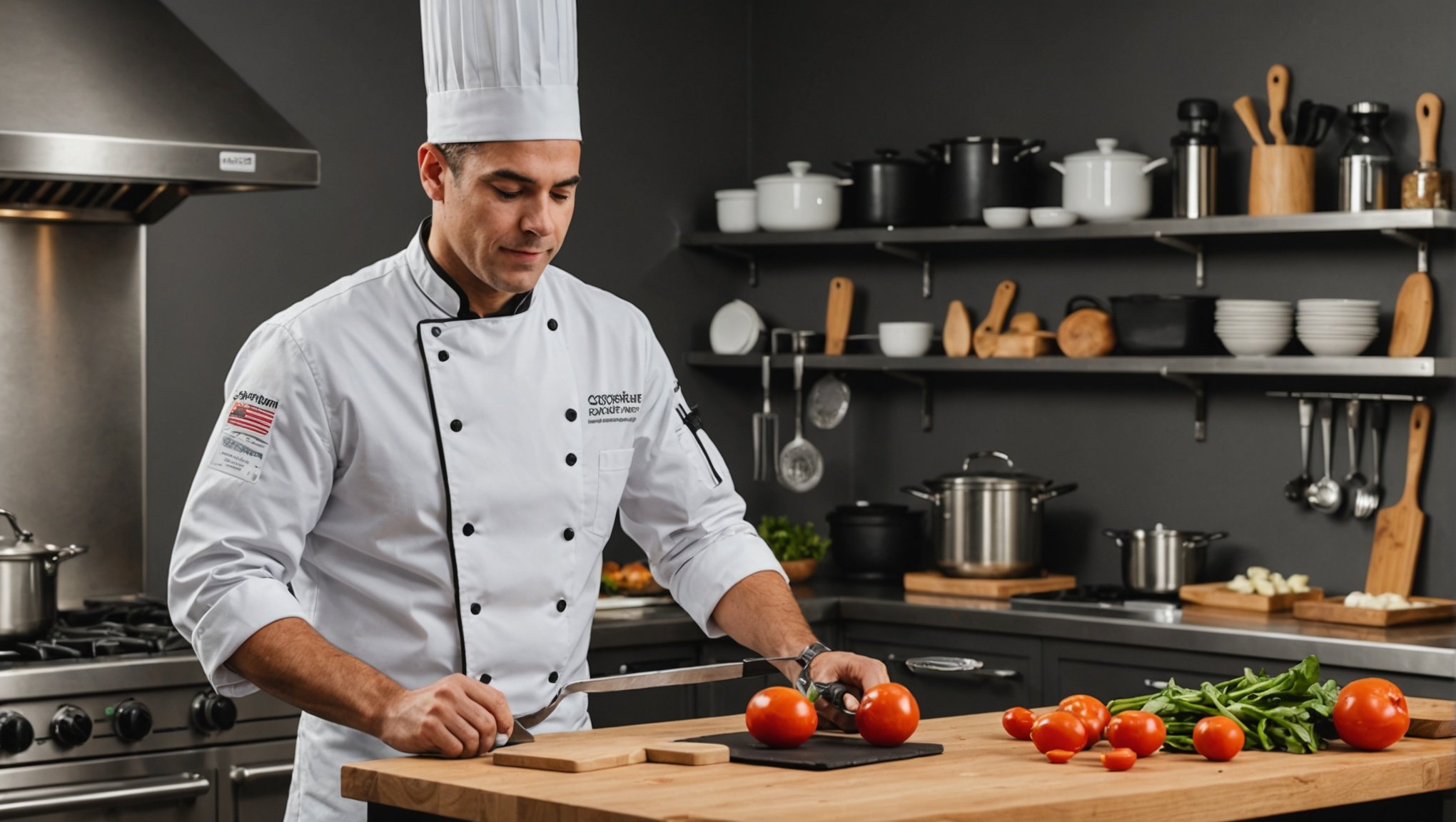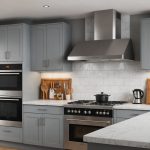Busy restaurant kitchens can be unforgiving. Long hours and repetitive motions lead to chef fatigue, impacting both performance and well-being. Ergonomic kitchen tools offer a solution, designed not just for efficiency but also for comfort. From specially designed knives to adjustable work surfaces, these innovations can alleviate pain and enhance productivity. Explore how investing in ergonomic tools can transform the culinary environment, improving both the chef’s experience and the quality of the dishes served.
Overview of Chef Fatigue
Chef fatigue is a prevalent issue in the culinary world, defined by the mental and physical exhaustion chefs experience due to demanding work conditions. The restaurant environment plays a significant role in contributing to this fatigue, with long hours, high-pressure situations, and the need for constant multitasking. These factors can lead to decreased performance and increased health risks, such as stress-related illnesses and musculoskeletal disorders.
Have you seen this : Mastering the Art of Restaurant Renovation: Blending Classic Charm with Contemporary Style
The impact of chef fatigue is profound, affecting both the quality of food and the well-being of kitchen staff. Fatigued chefs are more prone to errors, which can compromise food safety and customer satisfaction. Additionally, chronic fatigue can lead to burnout, diminishing a chef’s passion and creativity.
Addressing chef fatigue is crucial in maintaining a healthy and efficient kitchen. Implementing kitchen ergonomics can help alleviate physical strain by designing workspaces that reduce unnecessary movements and promote comfort. Furthermore, fostering a supportive restaurant environment that prioritizes breaks and work-life balance can significantly mitigate fatigue, ensuring chefs remain at the top of their game.
Additional reading : Top safety tips for installing a wood-fired pizza oven in your restaurant: keep your kitchen safe and efficient
Importance of Ergonomic Kitchen Tools
Ergonomic kitchen tools are designed with the user’s comfort and efficiency in mind, aiming to reduce physical strain and enhance overall performance in the kitchen. Ergonomic design principles focus on creating tools that fit the natural movements and postures of the human body, thereby minimizing the risk of injury and fatigue. This is particularly beneficial in high-pressure environments like restaurants, where chefs are constantly on their feet and performing repetitive tasks.
The benefits of ergonomic tools for chefs are numerous. By promoting comfort in cooking, these tools help reduce the likelihood of developing musculoskeletal disorders, a common issue in the culinary profession. For instance, ergonomic knives with well-designed handles allow for a secure grip, reducing the strain on a chef’s wrist during prolonged use. Similarly, tools like adjustable-height workstations and anti-fatigue mats can significantly improve a chef’s comfort and endurance.
Moreover, ergonomic tools enhance kitchen efficiency by streamlining tasks and reducing unnecessary movements. When chefs are comfortable and not distracted by discomfort or pain, they can focus better on their culinary creations, leading to improved productivity and food quality. By investing in ergonomic kitchen tools, restaurants can support their chefs’ well-being while also boosting their operational efficiency.
Key Ergonomic Kitchen Tools
In the culinary world, the right ergonomic kitchen tools can make a significant difference in reducing fatigue and enhancing efficiency. Let’s explore some essential gadgets and chef equipment that prioritize comfort and performance.
Knife Handles
Ergonomic knife handles are designed to fit comfortably in the user’s hand, offering a secure grip that minimizes wrist strain. Unlike traditional handles, these are often contoured to support natural hand movements. Chefs frequently praise the comfort and control provided by ergonomic designs, noting a significant reduction in hand fatigue during extended use.
Cutting Boards
The importance of height and stability in cutting boards cannot be overstated. Ergonomic cutting boards often feature adjustable heights and non-slip bases, ensuring stability and reducing strain on the back and shoulders. Studies have shown that these innovative features can significantly decrease the physical demands on chefs, leading to a more efficient and enjoyable cooking experience.
Utensils and Gadgets
Ergonomic utensils, such as spatulas and peelers, are crafted with balanced weight distribution and comfortable handles. These designs enhance usability, allowing chefs to perform tasks with ease. Top-rated ergonomic gadgets are recommended for their ability to reduce discomfort and improve productivity in the kitchen, making them a valuable addition to any chef’s arsenal.
Scientific Insights into Ergonomic Tools
Research in ergonomics has provided valuable insights into how kitchen tools can significantly impact chef fatigue and performance. Several kitchen studies have examined the relationship between ergonomic tool design and the reduction of physical strain. These studies consistently show that using ergonomically designed tools can lead to substantial fatigue reduction. By aligning with the body’s natural movements, these tools minimize unnecessary stress on muscles and joints, which is crucial in a demanding kitchen environment.
In-depth ergonomics research highlights that chefs using ergonomic tools report lower levels of discomfort and fatigue. This, in turn, correlates with improved performance, as chefs can maintain focus and efficiency without the distraction of physical pain. The studies underscore the importance of tool design in promoting a healthier, more sustainable work environment for culinary professionals. By investing in ergonomic solutions, kitchens not only enhance chef well-being but also boost overall productivity and food quality.
User Testimonials and Case Studies
In the bustling world of culinary arts, chef experiences with ergonomic tools can provide invaluable insights. Many chefs have shared their success stories, highlighting the transformative impact these tools have had on their daily routines.
Chef Experiences
Professional chefs often describe a noticeable difference in their comfort and efficiency after incorporating ergonomic tools into their kitchens. For instance, one chef noted a significant reduction in wrist strain and fatigue after switching to ergonomic knife handles. This change not only improved their day-to-day comfort but also enhanced their overall performance and job satisfaction.
Case Studies
Several case studies underscore the effectiveness of ergonomic tools. In one notable example, a restaurant implemented a range of ergonomic kitchen gadgets, including adjustable-height workstations and anti-fatigue mats. The results were impressive: chefs reported decreased physical strain and increased productivity, leading to an overall improvement in kitchen operations.
Insights into User Satisfaction
User satisfaction with ergonomic tools extends beyond comfort. Chefs frequently praise the longevity and durability of these tools, appreciating the long-term value they provide. Reviews often highlight how ergonomic designs not only reduce discomfort but also contribute to a more sustainable and enjoyable work environment. These testimonials and case studies collectively illustrate the profound benefits of ergonomic tools in the culinary world.
Practical Implementation in Restaurant Settings
Integrating ergonomic practices into a restaurant kitchen can significantly enhance both efficiency and staff well-being. To start, consider the strategic placement of ergonomic tools to streamline kitchen workflows. Position frequently used items within easy reach to reduce unnecessary movements, thereby saving time and energy. For example, placing ergonomic knives and other essential utensils near cutting stations can minimize physical strain and boost productivity.
Training staff on the use of ergonomic tools is crucial for maximizing their benefits. Conduct workshops or hands-on sessions to familiarize chefs with the features and advantages of ergonomic equipment. This not only improves their comfort but also fosters a culture of safety and health within the kitchen. Staff who understand the correct usage of these tools are more likely to experience reduced fatigue and increased job satisfaction.
Investing in ergonomic kitchen equipment offers substantial long-term benefits. While the initial cost may seem high, the reduction in work-related injuries and improved efficiency can lead to significant savings over time. Moreover, a well-implemented kitchen ergonomics strategy can enhance restaurant efficiency, as chefs can work more effectively without the distraction of physical discomfort. Adopting these practices not only supports chef well-being but also contributes to a more sustainable and productive kitchen environment.
Comparison of Popular Ergonomic Kitchen Tools
Exploring ergonomic gadgets in the kitchen can be a game-changer for chefs seeking comfort and efficiency. Let’s delve into the leading options available and weigh their benefits.
Top Brands and Models
Several brands stand out in the realm of ergonomic kitchen tools, each offering unique features to enhance the culinary experience. Renowned names like OXO, Victorinox, and Wüsthof have developed products that prioritize user comfort and functionality. OXO, for instance, is celebrated for its soft, non-slip grips that ensure ease of use. Victorinox offers precision and durability in its knife selection, while Wüsthof combines ergonomic design with high-quality materials.
When comparing these brands, it’s essential to consider features, price points, and user ratings. OXO products are often praised for their affordability and innovative designs, making them a popular choice among budget-conscious chefs. Victorinox and Wüsthof, while slightly more expensive, are lauded for their superior craftsmanship and longevity. User reviews consistently highlight the comfort and efficiency these tools bring to daily kitchen tasks.
Cost vs. Benefit Analysis
Investing in the best kitchen tools requires a thoughtful evaluation of cost versus benefit. While ergonomic gadgets may come with a higher initial price tag, the long-term savings from reduced fatigue and improved productivity can be substantial. Chefs who experience less physical strain often report fewer work-related injuries, leading to decreased medical expenses and downtime.
Balancing budget constraints with quality choices is crucial. Opting for high-quality ergonomic tools can lead to significant returns on investment, as these products typically offer enhanced durability and performance. By prioritizing ergonomic designs, restaurants can support their chefs’ well-being and efficiency, ultimately benefiting the overall kitchen operation.
Visuals and Resources
Visuals play a crucial role in comprehending the functionality and benefits of ergonomic kitchen tools. By observing these tools in action, chefs can better understand how they can reduce physical strain and enhance efficiency. Kitchen tool visuals offer a practical perspective, showcasing the ergonomic features that set these tools apart from traditional ones. For instance, seeing a demonstration of an ergonomic knife can highlight how its design minimizes wrist strain, making it easier for chefs to appreciate its value.
To further explore the advantages of ergonomic tools, consider engaging with instructional content such as videos or live demonstrations. These resources can provide step-by-step guidance on using ergonomic gadgets, ensuring chefs maximize their benefits. Watching experienced chefs use these tools can offer insights into best practices and innovative techniques, fostering a deeper understanding of their application in a busy kitchen environment.
For those interested in delving deeper into the subject, numerous ergonomic resources are available. Books, online courses, and workshops offer comprehensive information on implementing ergonomic principles in the kitchen. These resources can equip chefs with the knowledge needed to create a more comfortable and efficient workspace, ultimately enhancing their culinary skills and reducing fatigue.







No responses yet